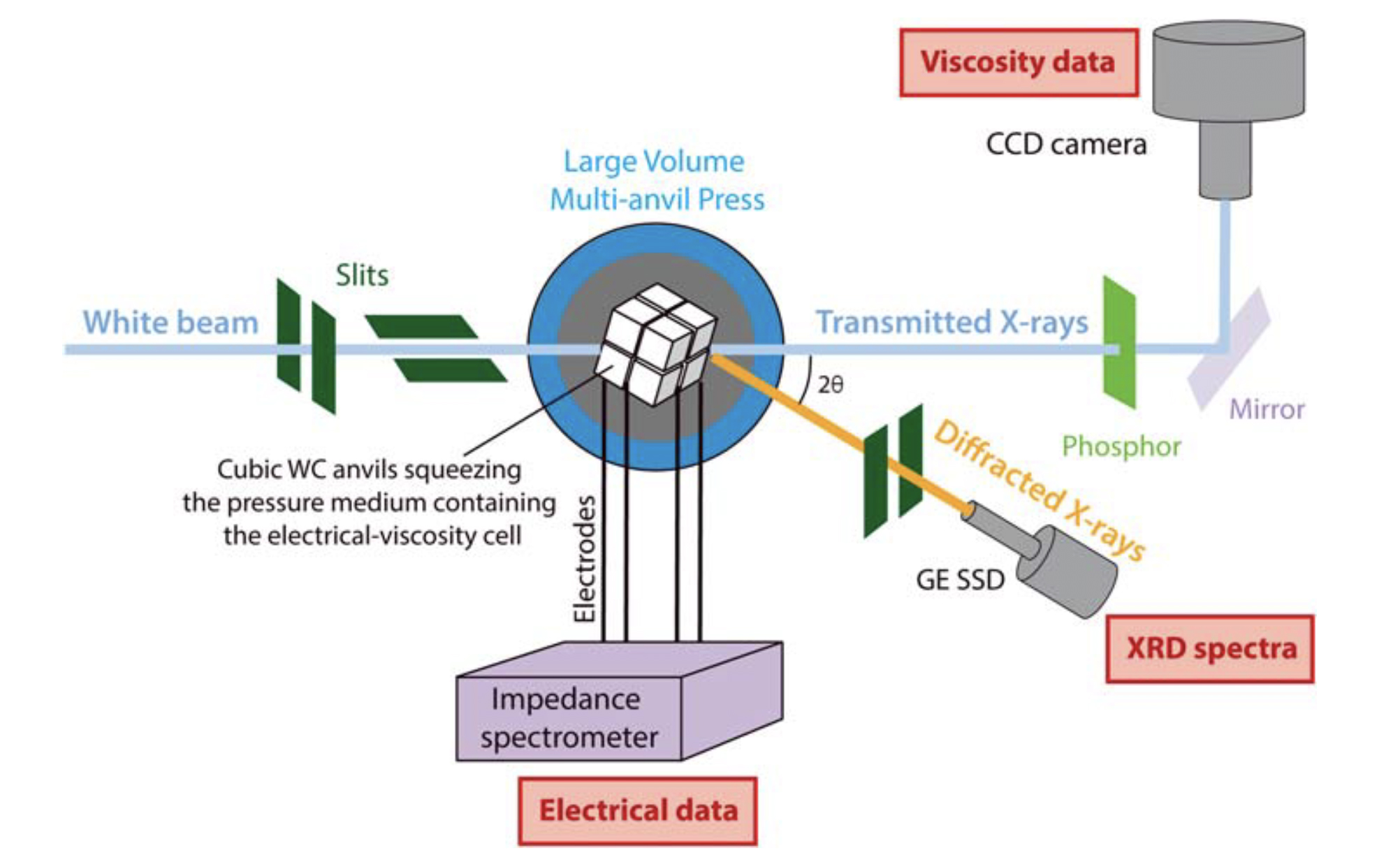Professor Anne Pommier, PhD student Hadrien Pirotte, and collaborators have developed a new experimental setup to explore the physical properties of planetary interiors

In a new study published in High-Pressure Research, Anne Pommier, Kurt Leinenweber (ASU), PhD student Hadrien Pirotte (U. of Liège, co-advised by A. Pommier), and their collaborators at APS-GSECARS, Tony Yu and Yanbin Wang, have developed a new technique that allows in situ measurements of three thermophysical properties of Earth and planetary materials: diffraction, electrical resistivity, and viscosity. This multi-probe capability was tested on iron alloys under a 2 GPa pressure and under temperature up to 1750 K at GeoSoilEnviroCARS (GSECARS) of the Advanced Photon Source beamline (APS), Argonne National Laboratory, IL. Link here.
“Designing and developing this project has been very stimulating and exciting, and it has been a lot of fun to run these experiments at APS all together” says Pommier. “Doing research at a national synchrotron facility like GSECARS is a unique opportunity for experimentalists like us, because the beam allows conducting experiments that would not be tractable in the lab. Going there is always a deeply inspiring experience, not only because of the very high quality of the research done by all the different users and staff, but also because the atmosphere of the place is highly creative, collaborative, and supportive”. The team now hopes to conduct new experiments with this setup to further investigate the properties of planetary interiors.
As part of their experiments on iron alloys, Pommier et al. found that phase transitions as detected by X-ray diffraction patterns are clearly associated with changes in the electrical response of the samples. In Fe-S liquids, viscosity measurements in the molten state (using the falling-sphere technique) indicate an increase in viscosity with increasing the amount of alloying agent. A correlation between electrical resistivity and viscosity is also observed. This multi-probe measurement capability improves the detection of solid-state transformations and solid-melt transitions, relates structural and electrical properties of geomaterials, and allows constraining the mobility of melts using viscosity data. This setup triggers a new avenue within mineral physics and experimental geophysics, representing significant advances for interdisciplinary physics research studies. The far-reaching impact extends to scientists of all disciplines that seek to understand the transport properties of solid and molten materials.
This work was supported by an NSF-CAREER grant awarded to Anne Pommier and an NSF-COMPRES IV EOID grant awarded to Anne Pommier and Kurt Leinenweber. The new setup is made available to the scientific community at APS-GSECARS and cell assemblies used for high-pressure, high-temperature experiments are available via NSF-COMPRES.
